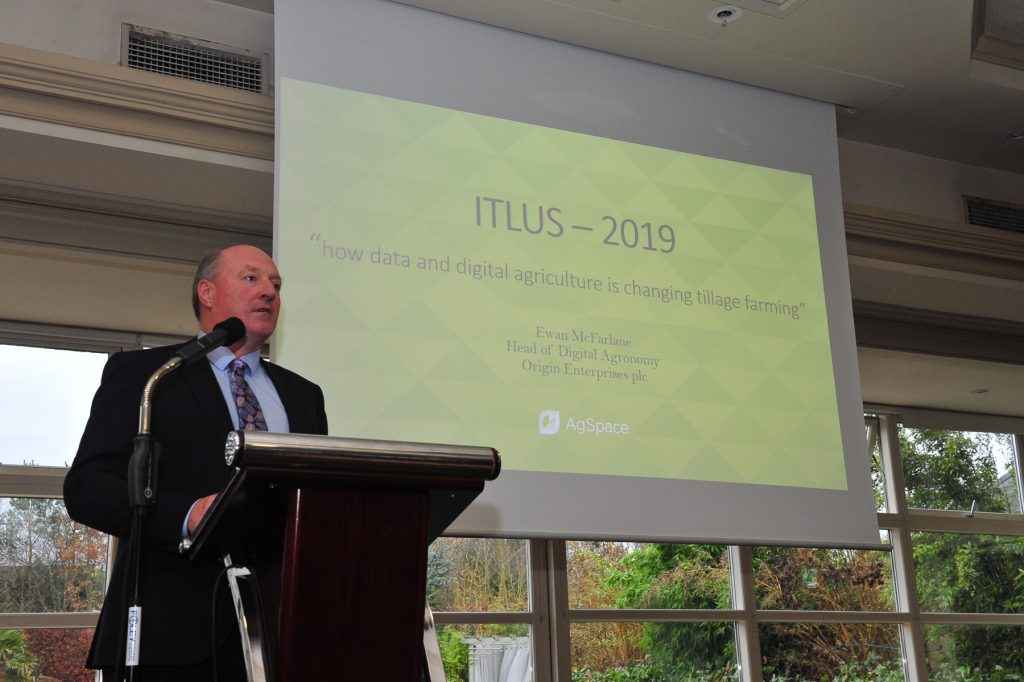
The Irish Tillage and Land Use Society’s 2019 Winter Conference took place on the 4th and 5th of December in Athy Co. Kildare. To celebrate the fact that this year marks the 50th anniversary of the society we had revived our old practice of having a session of the conference on Wednesday evening as well as the usual full day on Thursday. At our summer event we had looked back at the history of the society and how tillage farming had changed over that period, our intention with the conference was to look forward to see what challenges might be facing us in the future.
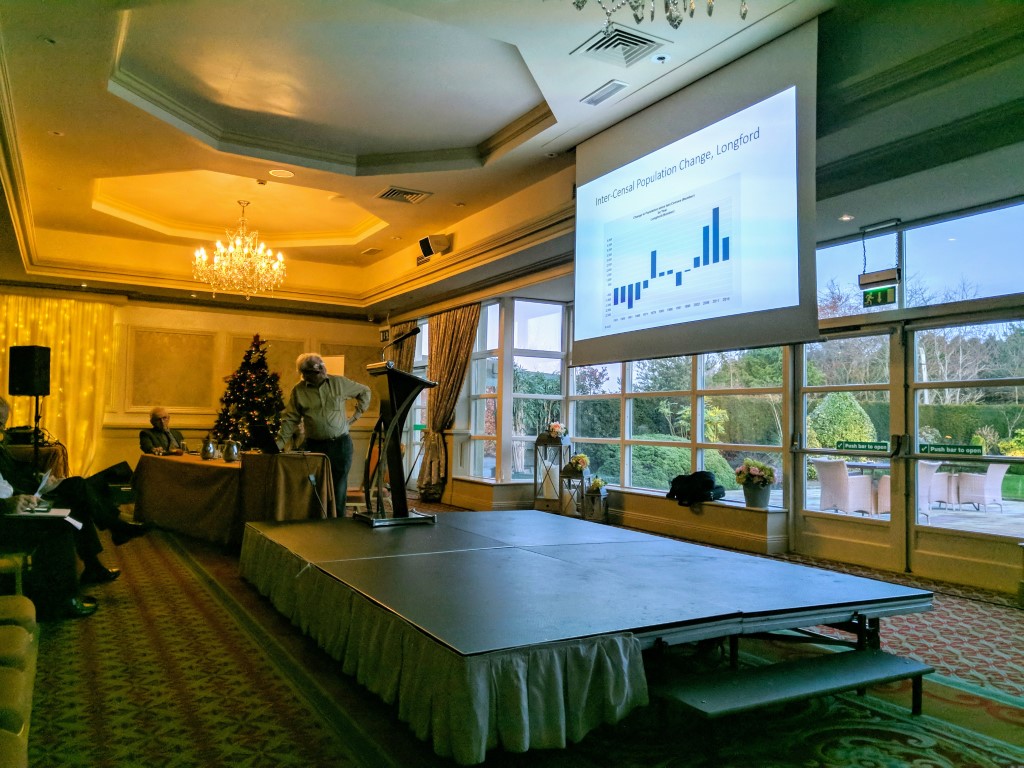
After a welcome from our President Michael Phelan the chairman for the evening John Stokes introduced our first speaker who was Colm McCarthy from UCD. Colm’s paper was titled “Is Rural Ireland in decline?”. Colm took us through the changes in population in the various regions of the country, the social changes that have taken place and the changes in personal mobility that have led to the situation that services in smaller town and villages have declined while larger towns have grown. Colm also discussed some of the economic changes needed to address the challenge of climate change.
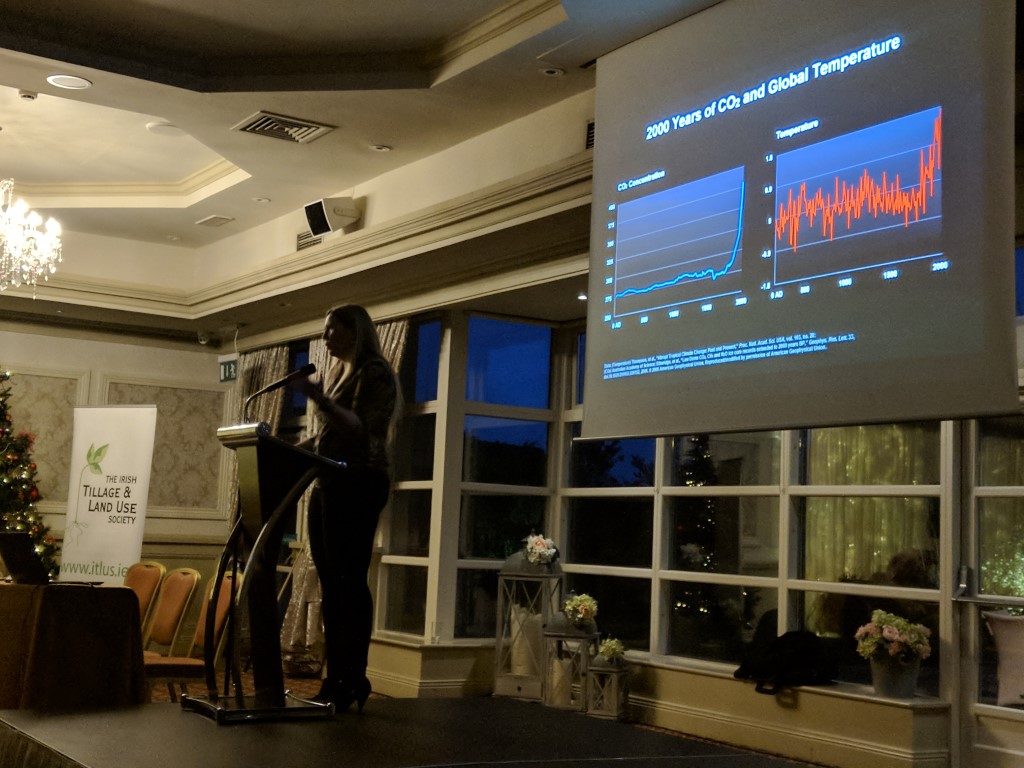
Our next speaker was environmental scientist Dr Cara Augustenberg. Cara told us that climate change dwarfs all other the environmental challenges that we face and showed slides to demonstrate how the globe is warming and how the rate of warming is accelerating. All sectors are contributing to this rise including agriculture and all sectors will have to contribute to the changes needed to reduce emissions. While the tillage sector is not a big contributor to the rise in emissions it will still have to play its part. Cara said that changes in the climate will have a big effect on our sector with more frequent extreme weather events leading to more stresses on our cropping systems, also higher levels of CO2 in the atmosphere lead to higher levels of pests and reduce the plants immune response.
Our final speaker on Wednesday evening was Prof Gerry Boyle, director of Teagasc who spoke to us on ” The tillage sector in Irish agriculture”. Gerry said that the tillage sector was a vital part of Irish agriculture and while the sector had declined in size it was very important to the country. Gerry took us through income statistics from the NFS which showed that incomes on tillage farms while volatile were consistently better than on non dairy stock farms, he also stressed the importance of the BPS to tillage farms and felt that convergence had been dis proportionally hard on the sector. He said that Teagasc would continue to support the sector with research to maintain the high environmental sustainability we have and to increase our competitiveness.
The Wednesday evening session then concluded with a question and answer session
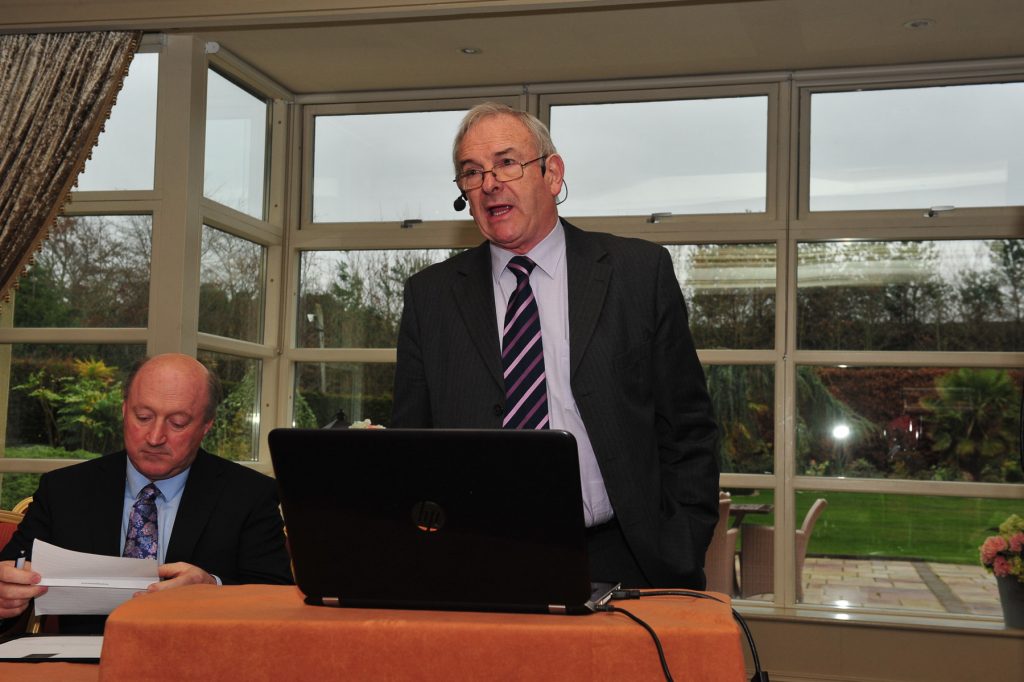
The second day of our conference commenced with Andy Doyle giving his thoughts on ITLUS on the occasion of the 50th anniversary of the society, he had a look back at our history, at the celebration we had at our summer field meeting and also a look forward at how we can remain relevant in the future.
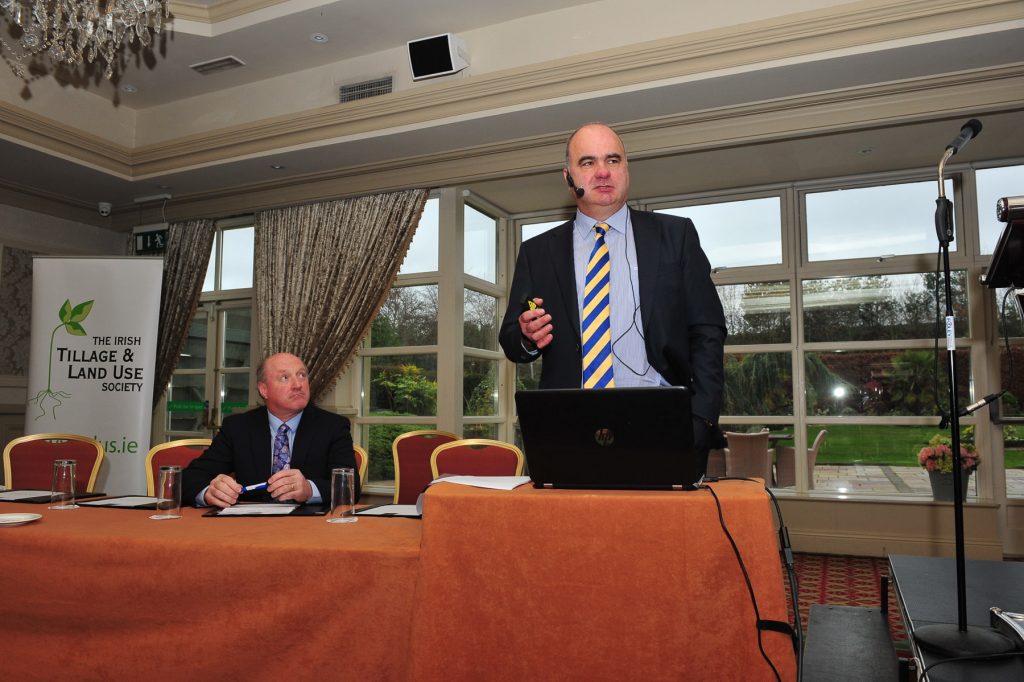
Our second speaker was Bill Callanan, Cheif Inspector, DAFM. Bill’s address had the theme looking to the next 50 years, he said that tillage is a vital sector of the country’s agri sector with an economic value of €450 a year, a key component of our supply chain, both for feed and food raw materials and also an important part of a mixed agricultural landscape. Bill took us through some of the challenges facing our industry, changes to the support structures, climate change and changing consumer demand and preferences but felt that ultimately they may lead to opportunities like food for health, protein displacement and access to premium markets
Our final session before lunch, chaired by Rob Coleman took a look at evolving technologies in crop production
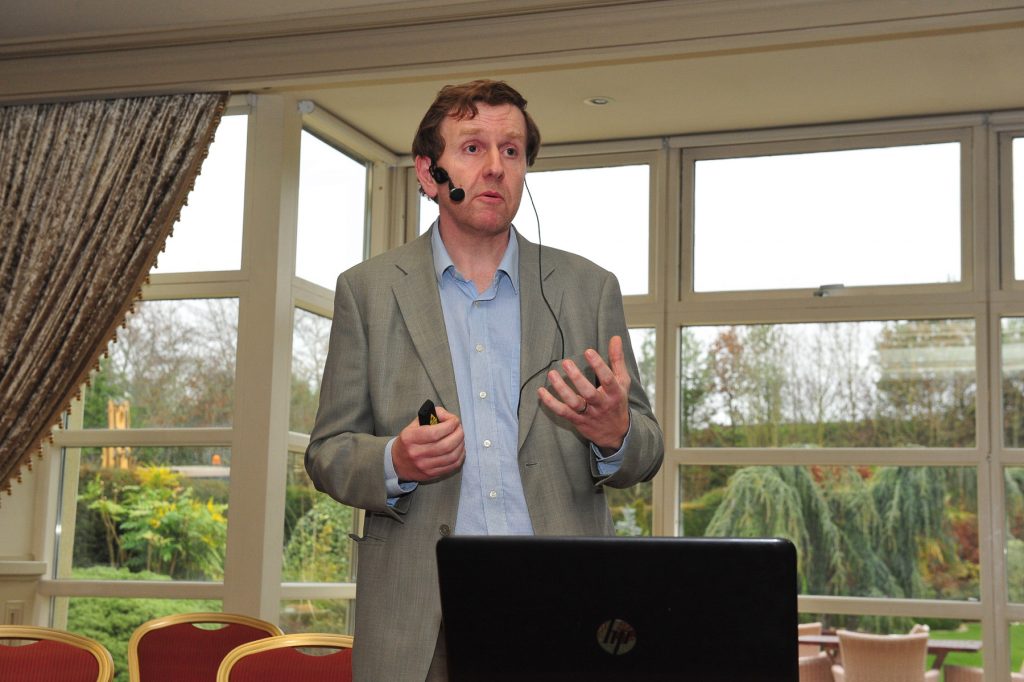
The first speaker in this session was Ed Flatmen from Limagrain who spoke on the subject of new technologies in cereal breeding and how they will affect crop production in the medium to long term. Ed told us that a drop in DNA sequencing costs and increased use of high density DNA mapping had enabled a pipeline of DNA marker development. Using this technology has allowed seed breeders to increase their catalogue of commercially important genes and aids them in stacking desirable characteristics in new varieties and shorten the time it takes to bring them to market.
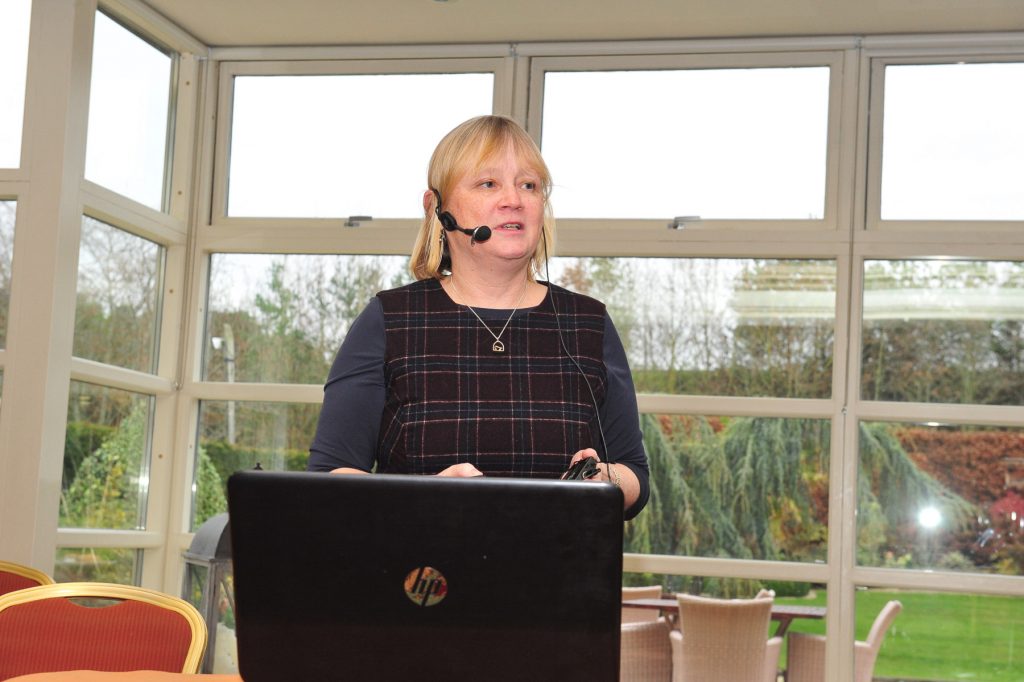
Our final speaker before lunch was Louise Brinkworth of Corteva Agriscience, speaking about new tools and approaches to crop protection. Louise told us how changes in the registration process had reduced the number of active ingredients available to the sector and greatly reduced the number of new actives being submitted while at the same time raising the complexity of the application process and the costs of getting it done successfully. Louise said that biological products are a new and growing section of the market and that the registration process there was not quite as onerous but that much of the development was towards protected crops and that broadacre crops were more problematic for them.
After a fine lunch the final session of the conference started with Philip Reck in the chair, the theme was future trends in mechanisation.
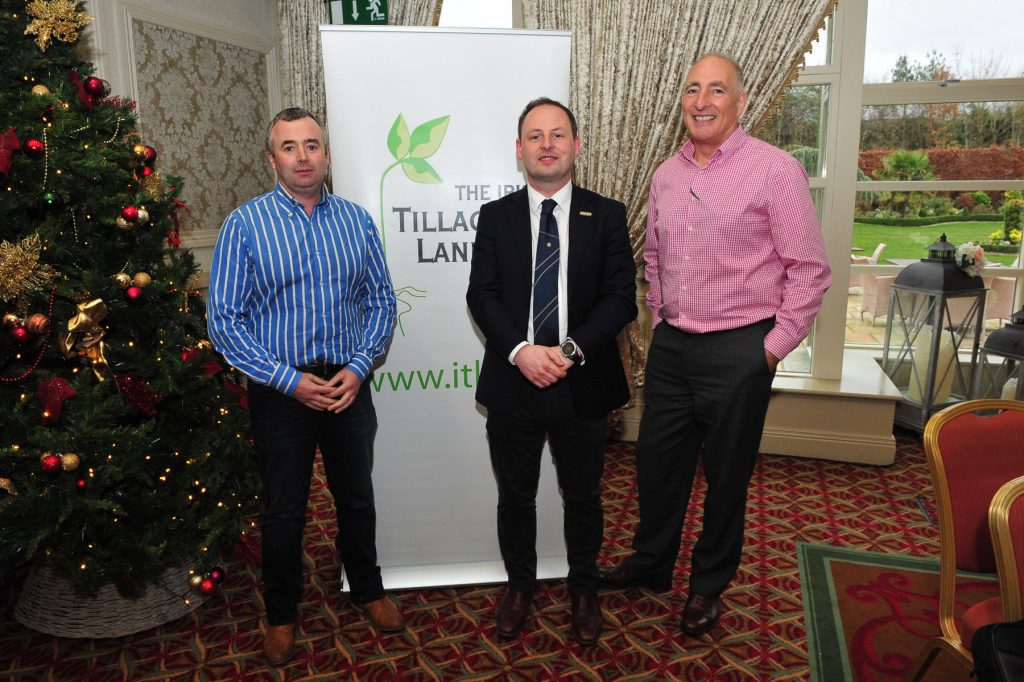
Firstt up was Ewan McFarlane from Origin Enterprises whose paper was titled how data and digital agriculture is changing agriculture. Using as an example the field which had set a world record for winter wheat yield Ewan took us through all the data both from machines operating in the field, precision soil tests, remote sensing and weather data available from the web which could aid decision making and timeliness in the agronomy of our crops.
Next up was Darragh Mullin of Hew Holland speaking about trends in agricultural mechanisation from a manufacturers perspective. Darragh told us how machines are becoming more connected and how the data that is being generated is being used to improve productivity across the crop production cycle. Darrah also spoke about the next generation technology platform, how connected machines would leverage connectivity to reduce demand for labour and increase machine autonomy.
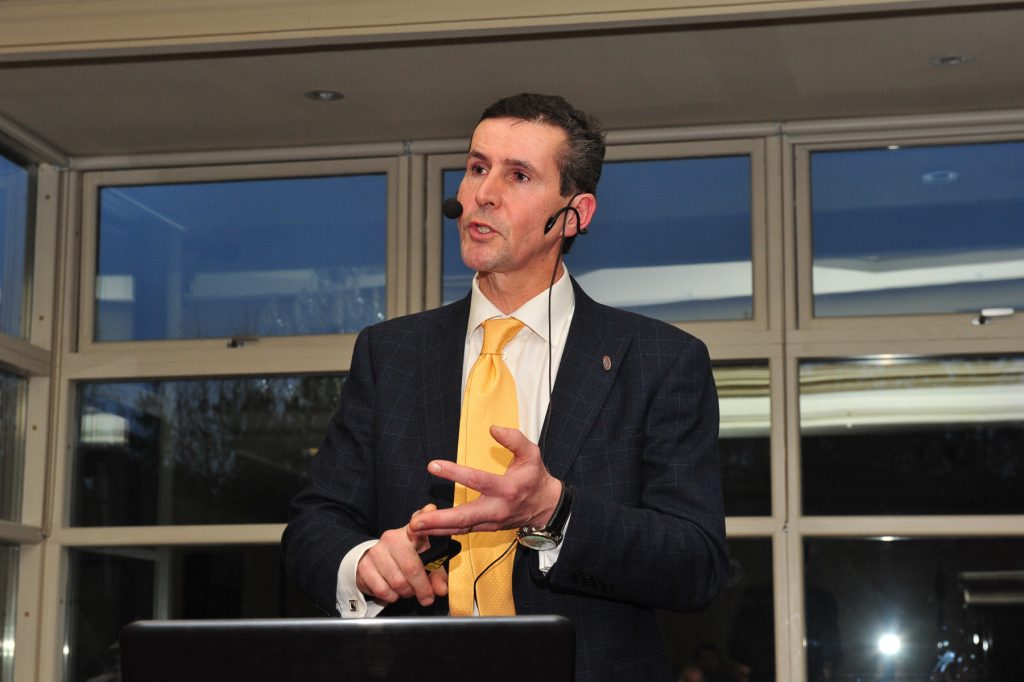
Our final speaker of the conference was Prof Kevin McDonnell of UCD who spoke on the future direction of Irish tillage mechanisation. Kevin said that the soil is the basis for our crop production and that while the increase in machine size has helped to maintain or increase output and enterprise size it has brought issues with compaction damage to the soil. Kevin told us about research trials ongoing on establishment systems to try and quantify their costs and benefits and also spoke on how tracks and new tyre technologies might be of benefit in the future.

You must be logged in to post a comment.